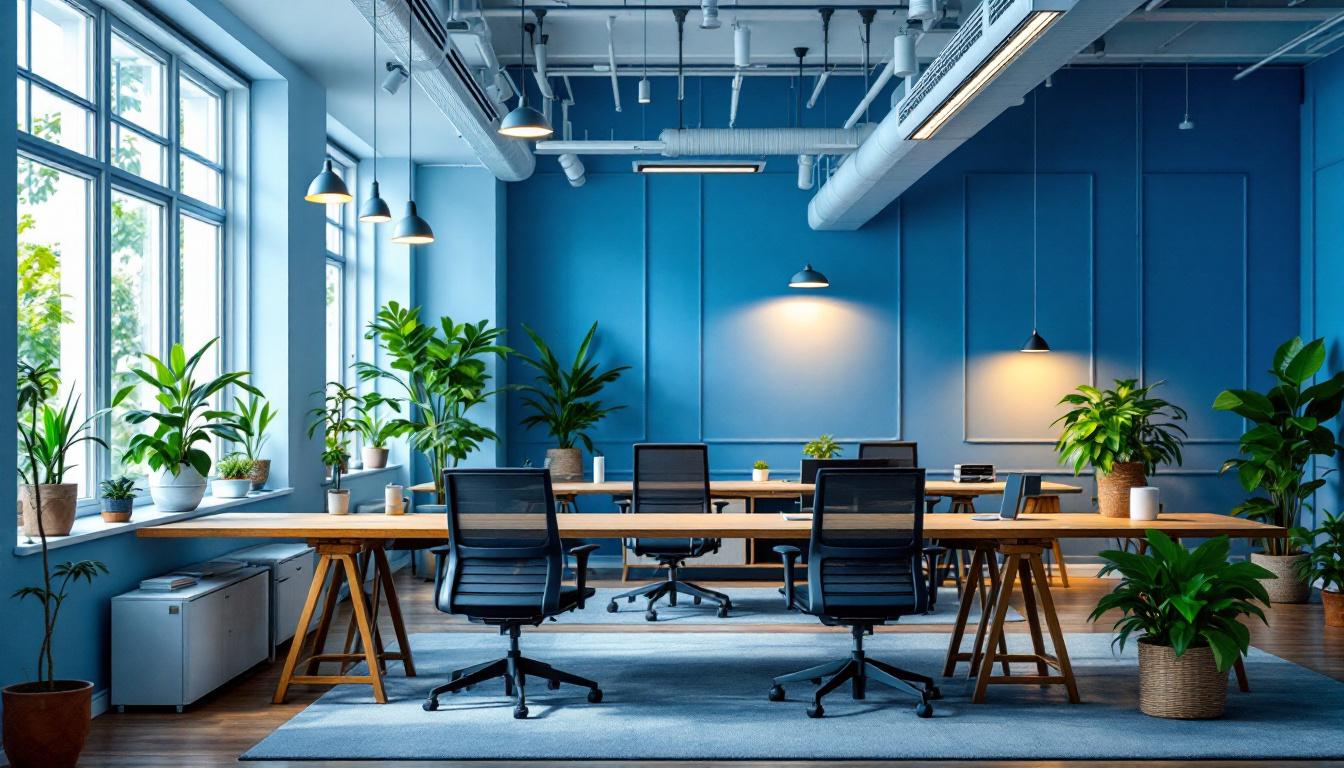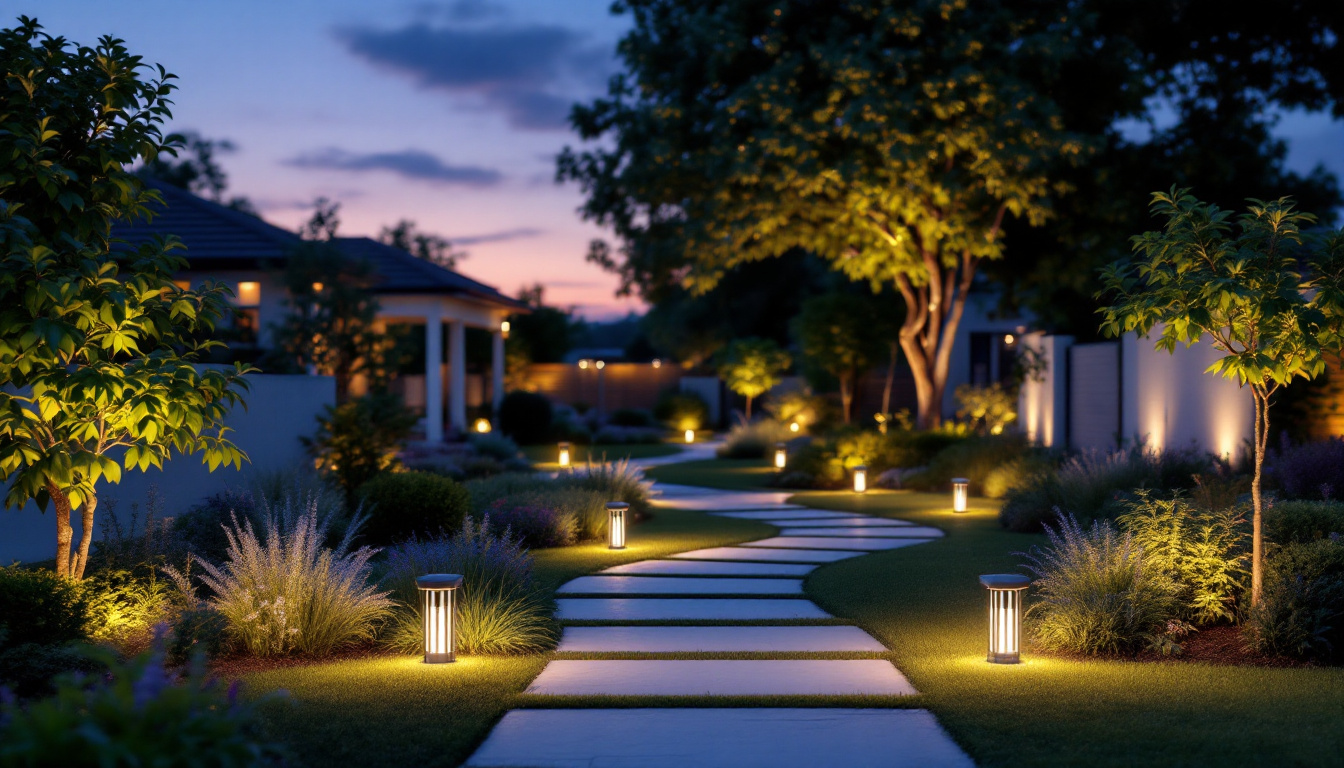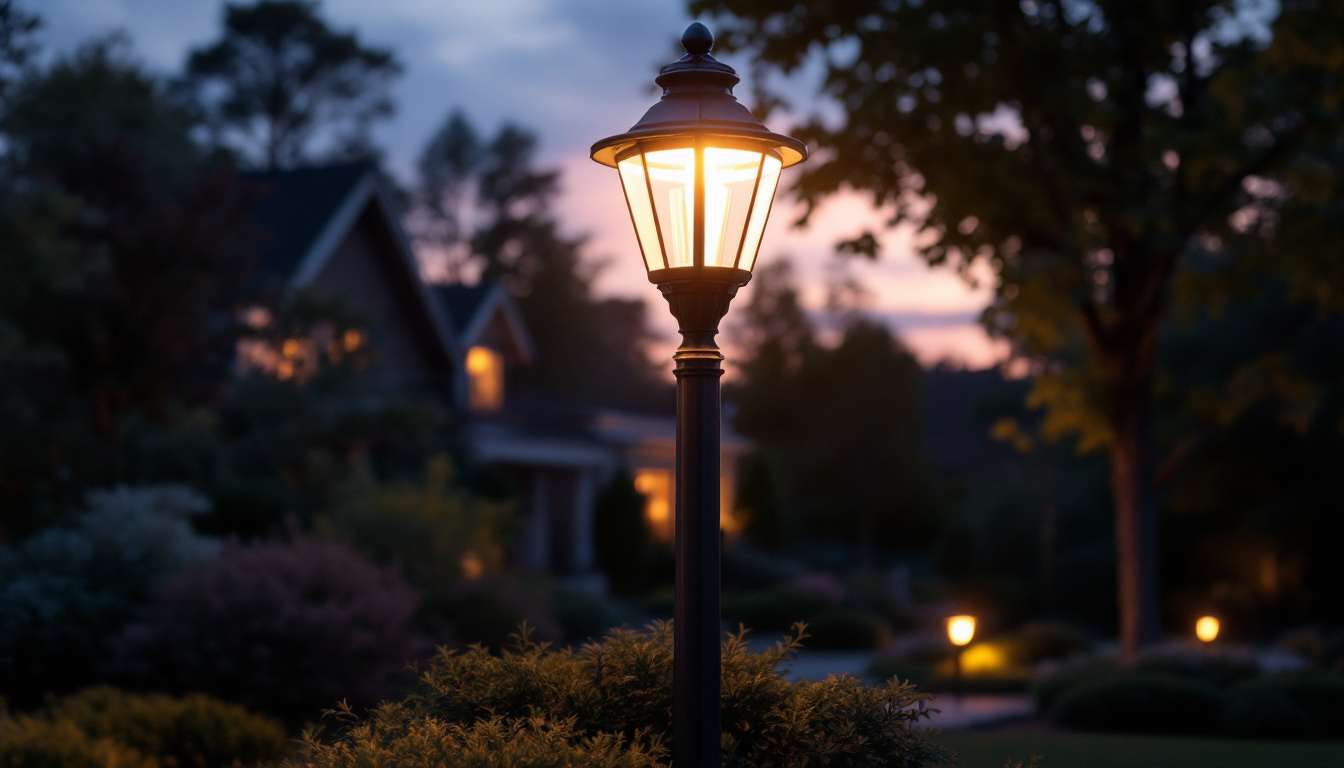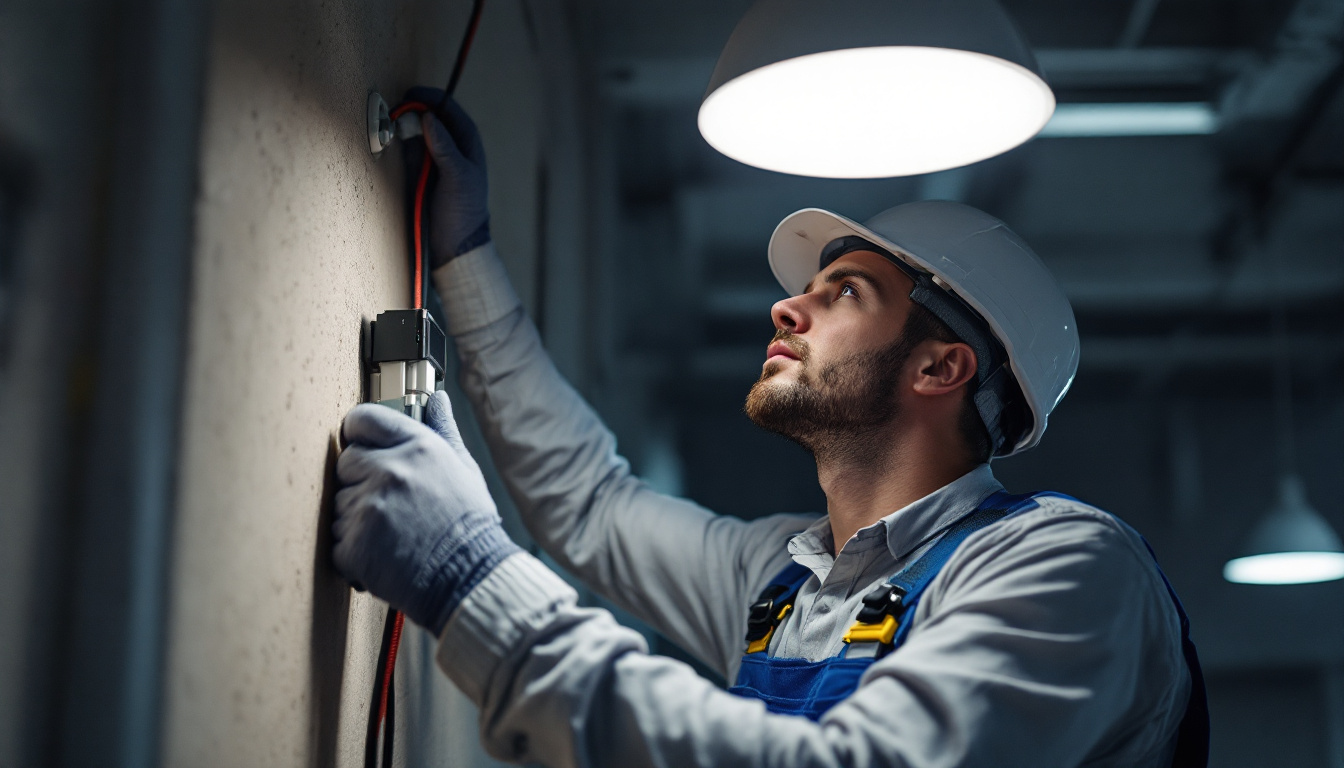
Lighting plays a crucial role in office environments, influencing everything from employee productivity to overall mood. For lighting contractors, understanding the nuances of office lighting is essential to delivering optimal solutions that meet both aesthetic and functional needs. This guide explores key considerations, types of lighting, and best practices for creating effective office lighting designs.
Office lighting is not merely about illumination; it is a critical factor that can enhance or hinder workplace performance. Proper lighting can reduce eye strain, improve focus, and foster a positive atmosphere. Conversely, poor lighting can lead to fatigue and decreased productivity. The right lighting design can also influence the overall aesthetic of the workspace, creating an environment that employees feel proud to be a part of, which can further boost morale and engagement.
Furthermore, the design of office lighting should align with the tasks being performed in various areas. For instance, collaborative spaces may benefit from brighter, more dynamic lighting, while quiet zones might require softer, more subdued options. Recognizing these needs is essential for any lighting contractor aiming to provide tailored solutions. Additionally, incorporating adjustable lighting options can empower employees to customize their workspaces according to their preferences, promoting a sense of ownership and comfort in their environment.
Research indicates that well-designed lighting can significantly affect employee well-being. Natural light, for example, has been shown to improve mood and energy levels. Incorporating daylighting strategies, such as skylights or large windows, can enhance the overall office environment. Studies have revealed that workplaces with ample natural light can reduce absenteeism and increase job satisfaction, making it a crucial consideration for employers looking to attract and retain talent.
Additionally, the color temperature of artificial lighting can influence alertness. Warmer tones may create a cozy atmosphere, while cooler tones can promote alertness and concentration. Understanding these psychological effects is vital for lighting contractors when proposing solutions to clients. Moreover, the integration of smart lighting systems that adjust based on the time of day or occupancy can further enhance employee comfort and productivity, creating a responsive environment that adapts to the needs of its users.
Another critical aspect of office lighting is compliance with relevant standards and regulations. The Illuminating Engineering Society (IES) provides guidelines on illumination levels for different office tasks. Adhering to these standards not only ensures a safe working environment but also protects contractors from potential liability. It is essential for contractors to conduct thorough assessments of lighting needs based on the specific activities performed in each area of the office, ensuring that every workspace is adequately illuminated.
Contractors should familiarize themselves with local codes and regulations, which may dictate specific requirements for energy efficiency, light pollution, and safety. Staying informed about these standards ensures that the lighting solutions provided are not only effective but also compliant. Additionally, embracing energy-efficient technologies, such as LED lighting, can contribute to sustainability efforts and reduce operational costs for businesses, making it a win-win for both the environment and the bottom line. By prioritizing compliance and sustainability, contractors can position themselves as leaders in the evolving landscape of office design and functionality.
Office lighting can be categorized into three primary types: ambient, task, and accent lighting. Each type serves a distinct purpose and contributes to the overall lighting scheme.
Ambient lighting is the general illumination that fills an entire space, providing a uniform level of light. This type of lighting is essential for creating a comfortable environment where employees can navigate and perform their tasks without difficulty.
Common sources of ambient lighting include overhead fixtures, such as LED panel lights or fluorescent ceiling lights. When designing ambient lighting, it is crucial to consider the layout of the office, ensuring that light is evenly distributed to avoid dark spots and glare.
Task lighting focuses on specific areas where detailed work is performed, such as desks or conference tables. It is designed to provide adequate illumination for activities that require concentration and precision.
Desk lamps, under-cabinet lights, and adjustable fixtures are popular options for task lighting. When selecting task lighting, it is important to consider the intensity and direction of the light to minimize shadows and enhance visibility.
Accent lighting is used to highlight specific features or areas within an office, such as artwork, architectural elements, or branding. This type of lighting adds visual interest and can create a more dynamic atmosphere.
Track lighting, wall sconces, and spotlights are commonly used for accent lighting. When implementing accent lighting, it is essential to balance it with ambient and task lighting to maintain overall functionality.
Designing an effective lighting scheme requires careful consideration of several factors. Lighting contractors must assess the unique needs of each office space and tailor their solutions accordingly.
The layout of an office significantly influences lighting design. Open-plan offices, for instance, may require different lighting strategies compared to enclosed spaces. Understanding how employees interact with their environment is crucial for creating an effective lighting plan.
Additionally, the functionality of each area should guide the selection of lighting types. Collaborative spaces may benefit from flexible lighting options that can be adjusted based on the activity, while private offices might require more focused task lighting.
With growing concerns about energy consumption and environmental impact, lighting contractors must prioritize energy-efficient solutions. LED lighting, for example, offers significant energy savings compared to traditional incandescent or fluorescent bulbs.
Implementing smart lighting controls, such as occupancy sensors and dimmers, can further enhance energy efficiency. These technologies allow lighting to adjust based on occupancy and natural light availability, reducing unnecessary energy use.
Lighting also plays a vital role in the aesthetic appeal of an office. The choice of fixtures, color temperature, and light distribution can all contribute to the overall ambiance. Contractors should collaborate with interior designers and clients to ensure that the lighting design aligns with the company’s branding and image.
For instance, a tech startup may opt for modern, sleek fixtures that reflect innovation, while a law firm might choose more traditional lighting to convey professionalism. Understanding the client’s vision is key to creating a cohesive design.
Once the design phase is complete, the installation process begins. Following best practices during installation ensures that the lighting system functions optimally and meets the intended design goals.
Correct placement of fixtures is essential for achieving the desired lighting effects. Lighting contractors should consider factors such as ceiling height, furniture arrangement, and the specific tasks performed in each area when determining fixture locations.
For ambient lighting, fixtures should be evenly spaced to provide uniform illumination. Task lighting should be positioned to minimize shadows and glare, while accent lighting should be strategically placed to highlight focal points without overpowering other lighting elements.
After installation, it is crucial to test the lighting system to ensure it meets the design specifications. This includes checking for consistent light levels, color temperature accuracy, and overall functionality.
Contractors should be prepared to make adjustments based on feedback from the client or end-users. This may involve repositioning fixtures, changing bulbs, or fine-tuning controls to achieve the desired lighting effect.
Lighting systems require ongoing maintenance to ensure optimal performance. Contractors should provide clients with guidelines for routine maintenance, including bulb replacement, cleaning fixtures, and checking for any electrical issues.
Offering ongoing support can help build long-term relationships with clients. Providing services such as periodic inspections or upgrades can ensure that the lighting system continues to meet evolving needs.
As technology continues to evolve, so do the trends in office lighting. Staying informed about these trends is essential for lighting contractors looking to remain competitive in the industry.
Smart lighting technology is rapidly gaining popularity in office settings. These systems allow for greater control over lighting conditions, enabling users to adjust brightness, color temperature, and schedules through mobile apps or centralized control systems.
Integrating smart lighting can enhance energy efficiency and provide a more personalized lighting experience for employees. Contractors should explore options for incorporating these technologies into their designs, ensuring compatibility with existing systems.
Human-centric lighting focuses on mimicking natural light patterns to support the well-being and productivity of occupants. This approach involves adjusting lighting levels and color temperatures throughout the day to align with the circadian rhythms of individuals.
Implementing human-centric lighting can lead to improved mood, better sleep quality, and increased productivity. Contractors should consider how to integrate this concept into their designs, potentially using tunable white LEDs or dynamic lighting systems.
Sustainability remains a key consideration in office lighting design. As businesses increasingly prioritize eco-friendly practices, lighting contractors must focus on solutions that minimize environmental impact.
This includes using energy-efficient fixtures, incorporating renewable energy sources, and designing systems that reduce light pollution. By adopting sustainable practices, contractors can not only meet client demands but also contribute to a healthier planet.
Effective office lighting is a multifaceted discipline that requires a deep understanding of both technical and aesthetic considerations. For lighting contractors, mastering the art of office lighting design involves staying informed about industry trends, adhering to standards, and prioritizing the well-being of occupants.
By focusing on the unique needs of each space and embracing innovative technologies, contractors can deliver lighting solutions that enhance productivity, promote well-being, and create inviting work environments. As the workplace continues to evolve, the role of lighting will remain pivotal in shaping the future of office design.
Ready to elevate your office lighting designs with the best in spec-grade lighting products? At LumenWholesale, we provide lighting contractors like you with the highest quality solutions at unbeatable wholesale prices. Say goodbye to local distributor markups and hello to a vast selection of reliable and high-performance lighting that meets the most stringent industry standards. Plus, with free shipping on bulk orders, you can enjoy premium lighting at the best value — without any hidden fees. Don’t compromise on quality or cost. Visit LumenWholesale today and experience the perfect blend of quality, affordability, and convenience for all your lighting needs.

Discover why staying updated on solar LED landscape lights is crucial for lighting contractors.

Discover the essential guide for lighting contractors on the various types of LED bulbs.

Illuminate your home’s exterior with confidence using our comprehensive lighting contractors’ checklist for front yard light poles.

Discover how the Maxim Countermax 89801Al can revolutionize your lighting installation projects.